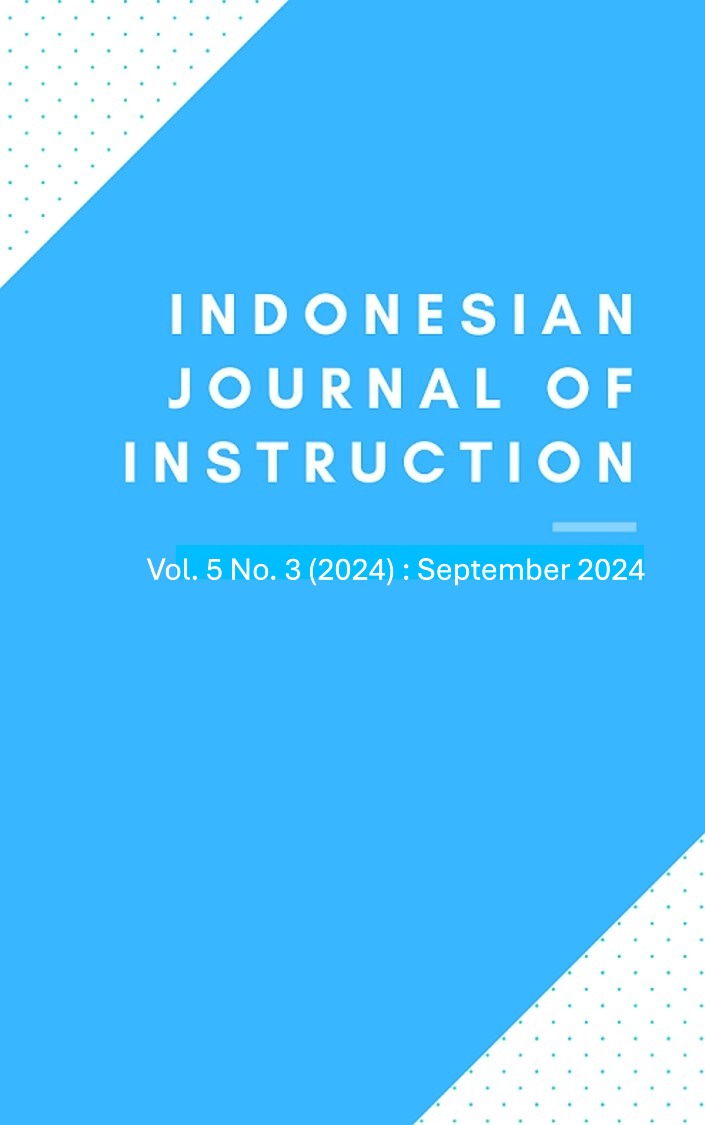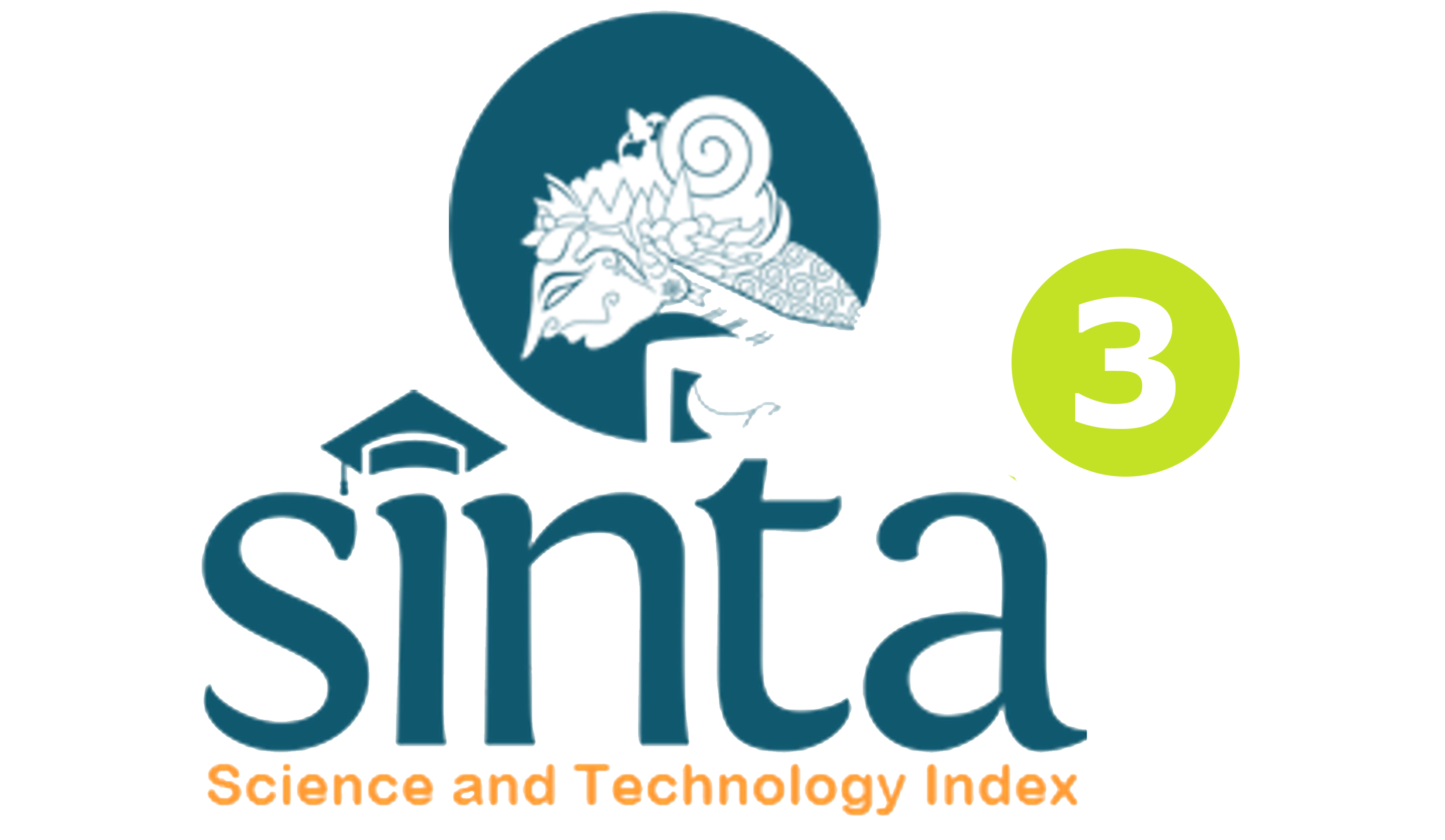Inclusive Education: Survey on Teachers' Perception of Its Implementation
DOI:
https://doi.org/10.23887/iji.v5i3.81932Keywords:
Inclusive Education, Inclusive Classes, Teacher PerceptionsAbstract
Inclusive education is still something new in Indonesia's education system. Teachers have an essential role in the learning process, and teachers' perceptions of inclusive classes influence the quality of inclusive class implementation. For this reason, this research aims to analyse teachers' perceptions of implementing inclusive classes. This research was carried out using a survey method involving 285 teachers in Indonesia as respondents. The data in this study was collected using a questionnaire consisting of several closed and several open questions. The collected data was then analyzed quantitatively and qualitatively. Based on the quantitative data, this research found that teachers in Indonesia have positive perceptions of implementing inclusive classes. However, from the qualitative data, it was found that they still feel they need more knowledge to implement quality inclusive classes. Additionally, training regarding implementing inclusive classes is still very limited, so it has yet to make teachers feel confident in implementing inclusive classes. Thus, this study concludes that teachers in Indonesia positively perceive implementing inclusive classes but cannot implement them optimally. So, support from the government, especially the Ministry of Education, Culture, Research and Technology, to facilitate education and training in implementing inclusive classes for teachers is necessary to realize inclusive classes and quality inclusive education.
References
Agirdag, O., & Muijs, D. (2023). School leadership development and academic achievement: Effectiveness of the High Performing Schools programme. International Journal of Educational Research, 122, 102248. https://doi.org/10.1016/j.ijer.2023.102248.
Alasim, K., & Paul, P. V. (2019). Understanding factors that affect teachers’ attitudes toward inclusion of students who are hard of hearing in Saudi Arabia. Deafness and Education International, 21(4), 210–226. https://doi.org/10.1080/14643154.2018.1489950.
Aldahdouh, T. Z., Nokelainen, P., & Korhonen, V. (2020). Technology and social media usage in higher education: The influence of individual innovativeness. Sage Open, 10(1). https://doi.org/10.1177/2158244019899441.
Almalky, H. A., & Alrabiah, A. H. (2024). Predictors of teachers’ intention to implement inclusive education. Children and Youth Services Review, 158, 107457. https://doi.org/10.1016/j.childyouth.2024.107457.
Almalky, H. A., & Alwahbi, A. A. (2023). Teachers’ perceptions of their experience with inclusive education practices in Saudi Arabia. Research in Developmental Disabilities, 140, 104584. https://doi.org/10.1016/j.ridd.2023.104584.
Alsulami, B., & Ault, M. (2024). Short report: Parents’ perspectives on inclusive schools for students with disabilities in Saudi Arabia. Research in Developmental Disabilities, 151, 104786. https://doi.org/10.1016/j.ridd.2024.104786.
Amka. (2019). Pendidikan Inklusif Bagi Siswa Berkebutuhan Khusus Di Kalimantan Selatan. Jurnal Pendidikan Dan Kebudayaan, 4(1), 86–101. https://doi.org/10.24832/jpnk.v4i1.1234.
Arnold, S., & Reed, P. (2019). Measuring the word recognition abilities of children who are both verbal and nonverbal with ASD using a traditional paper-based and a novel digital test format. British Journal of Special Education. https://doi.org/10.1111/1467-8578.12279.
Aseery, A. (2023). Enhancing learners’ motivation and engagement in religious education classes at elementary levels. British Journal of Religious Education, 00(00), 1–16. https://doi.org/10.1080/01416200.2023.2256487.
Bai, B., Shen, B., & Mei, H. (2020). Hong Kong primary students’ self-regulated writing strategy use: Influences of gender, writing proficiency, and grade level. Studies in Educational Evaluation, 65(August 2019). https://doi.org/10.1016/j.stueduc.2020.100839.
Bartanen, B., Husain, A. N., & Liebowitz, D. D. (2024). Rethinking principal effects on student outcomes. Journal of Public Economics, 234, 105115. https://doi.org/10.1016/j.jpubeco.2024.105115.
Bryant, D. P., Smith, D. D., & Bryant, B. R. (2008). Teaching students with special needs in inclusive classrooms. Pearson Education, Inc.
Carrington, S. (2023). Leadership for equity in schools. In R. J. Tierney, F. Rizvi, & K. B. T.-I. E. of E. (Fourth E. Ercikan (Eds.), International Encyclopedia of Education (Fourth Edition) (pp. 401–409). Elsevier. https://doi.org/10.1016/B978-0-12-818630-5.05003-X.
Coppe, T., Parmentier, M., Kelchtermans, G., Raemdonck, I., März, V., & Colognesi, S. (2024). Beyond traditional narratives about teacher professional development: A critical perspective on teachers’ working life. Teaching and Teacher Education, 139, 104436.https://doi.org/10.1016/j.tate.2023.104436.
Darmaji, D., Kurniawan, D. A., Astalini, A., & Sukarni, W. (2022). Description of Student Responses Toward Implementation of Discovery Learning Model in Physics Learning. Formatif: Jurnal Ilmiah Pendidikan MIPA, 12(1), 1–10. https://doi.org/10.30998/formatif.v12i1.8168.
Delima, N., & Cahyawati, D. (2021). Students’ Mathematics Self-Concept, Mathematics Anxiety and Mathematics Self-Regulated Learning during the Covid-19 Pandemic. Jurnal Pendidikan Matematika, 15(2), 103–114. https://doi.org/10.22342/jpm.15.2.13200.103-114.
Friantary, H., Afriani, Z. L., & Nopitasari, Y. (2020). The Implementation of Indonesian Language Learning for Dyslexic in Children at Elementary Schools in Bengkulu. Linguists : Journal Of Linguistics and Language Teaching, 6(2), 23. https://doi.org/10.29300/ling.v6i2.3750.
Garcia-Melgar, A., Hyett, N., Bagley, K., McKinstry, C., Spong, J., & Iacono, T. (2022). Collaborative team approaches to supporting inclusion of children with disability in mainstream schools: A co-design study. Research in Developmental Disabilities, 126, 104233. https://doi.org/10.1016/j.ridd.2022.104233.
González-Pérez, L. I., & Ramírez-Montoya, M. S. (2022). Components of Education 4.0 in 21st Century Skills Frameworks: Systematic Review. Sustainability, 14(3), 1493. https://doi.org/10.3390/su14031493.
Gore, J., Lloyd, A., Smith, M., Bowe, J., Ellis, H., & Lubans, D. (2017). Effects of professional development on the quality of teaching : Results from a randomised controlled trial of Quality Teaching Rounds. Teaching and Teacher Education, 68, 99–113. https://doi.org/10.1016/j.tate.2017.08.007.
Herdiyanto, D. M., Sulton, & Praherdhiono, H. (2020). Pengembangan Multimedia Pembelajaran Interaktif Pada Materi Tema Tanah Bagi Siswa Tunagrahita. JKTP Jurnal Kajian Teknologi Pendidikan, 3(1), 88–96. https://doi.org/10.17977/um038v3i12019p088.
Iarskaia-Smirnova, E., Salnikova, D., & Kononenko, R. (2024). Inclusion in education: Its bonds and bridges. Children and Youth Services Review, 158, 107432. https://doi.org/10.1016/j.childyouth.2024.107432.
Jaya, I. (2018). Penerapan Statistik Untuk Pendidikan. Prenadamedia Group.
Kusimo, A., O., Chidozie, F., & C. (2019). Inclusive education and sustainable development goals: A study of the physically challenged in Nigeria. Cogent Arts & Humanities, 6(1), 1–13. https://doi.org/10.1080/23311983.2019.1684175.
Long, T., & Guo, J. (2023). Moving beyond Inclusion to Belonging. International Journal of Environmental Research and Public Health, 20(20). https://doi.org/10.3390/ijerph20206907.
Lyra, O., Koullapi, K., & Kalogeropoulou, E. (2023). Fears towards disability and their impact on teaching practices in inclusive classrooms: An empirical study with teachers in Greece. Heliyon, 9(5), e16332. https://doi.org/10.1016/j.heliyon.2023.e16332.
McGunagle, D., & Zizka, L. (2020). Employability skills for 21st-century STEM students: the employers’ perspective. Higher Education, Skills and Work-Based Learning, 10(3), 591–606. https://doi.org/10.1108/HESWBL-10-2019-0148.
Mentel, H., Förster, N., Forthmann, B., & Souvignier, E. (2024). Predictors of teachers’ behavioral intentions in inclusive education and their changes over time: A competitive test of hypotheses. Teaching and Teacher Education, 141, 104509. https://doi.org/10.1016/j.tate.2024.104509.
Mulya, S., & Khoiri, Q. (2023). Kebijakan Pemerintah Terhadap Pendidikan Inklusif. Andragogi: Jurnal Pendidikan Islam Dan Manajemen Pendidikan Islam, 5(3), 280–298. https://doi.org/10.36671/andragogi.v2i2.105.
Österholm, M., Bergqvist, T., Liljekvist, Y., & van Bommel, J. (2024). Professional development at national scale: Effects on teacher knowledge and practice. Studies in Educational Evaluation, 83, 101381. https://doi.org/10.1016/j.stueduc.2024.101381.
Padmadewi, N N, & Artini, L. P. (2017). Teaching english to a student with autism spectrum disorder in regular classroom in Indonesia. International Journal of Instruction, 10(3), 159–176. https://doi.org/10.12973/iji.2017.10311a.
Padmadewi, N N, Artini, L. P., Ratminingsih, N. M., Utami, I. G. A. L. P., & Marsakawati, N. P. E. (2022). Needs analysis of literacy assessment using blended learning for beginner EFL learners. Journal of Language Teaching and Research, 13(2), 441–452. https://doi.org/10.17507/jltr.1302.27.
Padmadewi, Ni Nyoman, Artini, L. P., Sindu, I. G. P., Shanmuganathan, T., Suarcaya, P., & Dewi, K. S. (2023). Instructional Media for Autistic Spectrum Disorder (ASD) Children: A Study on Need Analysis. Journal of Education Research and Evaluation, 7(3), 477–491. https://doi.org/10.23887/jere.v7i3.61558.
Rahman, A. (2014). Effectiveness of the Total Physical Response (TPR) Learning Method in Improving English Vocabulary Mastery for Class VII Blind Students at SLB A Payakumbuh City. Jurnal Penelitian Pendidikan Khusus, 3(3), 685–697. https://doi.org/10.24036/JUPE39070.64.
Rapp, A. C., & Corral-Granados, A. (2024). Understanding inclusive education – a theoretical contribution from system theory and the constructionist perspective. International Journal of Inclusive Education, 28(4), 423–439. https://doi.org/10.1080/13603116.2021.1946725.
Rofiah, N. H., & Suhendri. (2023). The Progress of Inclusive Education Toward Agenda 2030 in Indonesia. In D. Lane, N. Catania, & S. Semon (Eds.), Progress Toward Agenda 2030 (Vol. 21, pp. 191–207). Emerald Publishing Limited. https://doi.org/10.1108/S1479-363620230000021013.
Ruijs, N. M., & Peetsma, T. T. D. (2009). Effects of inclusion on students with and without special educational needs reviewed. Educational Research Review, 4(2), 67–79. https://doi.org/10.1016/j.edurev.2009.02.002.
Sari Puspita, L. P. A., Padmadewi, N. N., & Wahyuni, L. G. E. (2019). Instructional Teaching Media to Promote Autistic Student’s Learning Engagement. Journal of Education Research and Evaluation, 3(2), 58. https://doi.org/10.23887/jere.v3i2.20975.
Shaffer, L., & Thomas-Brown, K. (2015). Enhancing Teacher Competency through Co-Teaching and Embedded Professional Development. Journal of Education and Training Studies, 3(3), 117–125. https://doi.org/10.11114/jets.v3i3.685.
Sheehy, K., Budiyanto, Widayati, S., & Rofiah, K. (2024). Towards inclusive practice in Indonesian kindergartens: Evaluating the impact of Sign Supported Big Books. Journal of Early Childhood Research, 22(1), 47–59. https://doi.org/10.1177/1476718X231188467.
Shen, J., Wu, H., Reeves, P., Zheng, Y., Ryan, L., & Anderson, D. (2020). The association between teacher leadership and student achievement: A meta-analysis. Educational Research Review, 31(October 2019), 100357.1-19. https://doi.org/10.1016/j.edurev.2020.100357.
Sproston, K., Sedgewick, F., & Crane, L. (2017). Autistic girls and school exclusion: Perspectives of students and their parents. Autism and Developmental Language Impairments, 2. https://doi.org/10.1177/2396941517706172.
Sumeningsih, L. E., Padmadewi, N. N., & Saputra, I. N. P. H. (2017). An Analysis of Communication Strategy Used by Teacher to Teach English as a Foreign Language in Inclusive Classroom at Aura Sukma Insani Bilingual Kindergarten. Jurnal Pendidikan Bahasa Inggris Undiksha, 5(2). http://etheses.uin-malang.ac.id/54322/.
Supandi, M., & Senam, S. (2019). Mengembangkan keterampilan berpikir kritis dengan game ritual tumpe. Jurnal Inovasi Pendidikan IPA, 5(2), 139–146. https://doi.org/10.21831/jipi.v5i2.25920.
Ulmi, N. (2013). Efforts to Improve English Vocabulary Mastery Ability Through the Totally Physical Response (TPR) Method for Children with Autism (Single Subject Research in Class IV SLB YPPA Padang). Jurnal Penelitian Pendidikan Khusus, 1(1), 574–585. https://doi.org/10.24036/JUPE9860.64.
Wächter, T., Gorges, J., Apresjan, S., & Lütje-Klose, B. (2024). How can inclusion succeed for all? Children’s well-being in inclusive schools and the role of teachers’ inclusion-related attitudes and self-efficacy. Teaching and Teacher Education, 139, 104411. https://doi.org/10.1016/j.tate.2023.104411.
Wahyudi, A., & Huda, M. (2019). Internalization of Islamic Values for Students with Special Needs in Special School Education Institutions (SLB). AL-HAYAT: Journal Of Islamic Education, 3(1), 90–97. https://doi.org/10.35723/ajie.v3i1.55.
Witzel, B., & Mize, M. (2018). Meeting the Needs of Students with Dyslexia and Dyscalculia. SRATE Journal, 27(1), 31–39. https://eric.ed.gov/?id=EJ1166703.
Woodcock, S., Sharma, U., Subban, P., & Hitches, E. (2022). Teacher self-efficacy and inclusive education practices: Rethinking teachers’ engagement with inclusive practices. Teaching and Teacher Education, 117, 103802. https://doi.org/10.1016/j.tate.2022.103802.
Zeng, J. (2023). A theoretical review of the role of teacher professional development in EFL students’ learning achievement. Heliyon, 9(5), e15806. https://doi.org/10.1016/j.heliyon.2023.e15806.
Downloads
Published
How to Cite
Issue
Section
License
Copyright (c) 2024 Ni Nyoman Padmadewi, I Made Sukma Adisetiawan Sukadana, Luh Putu Artini, I Ketut Trika Adi Ana, Kadek Yogi Parta Lesmana, Ketut Susiani

This work is licensed under a Creative Commons Attribution-ShareAlike 4.0 International License.
Authors who publish with the Indonesian Journal of Instruction agree to the following terms:
- Authors retain copyright and grant the journal the right of first publication with the work simultaneously licensed under a Creative Commons Attribution License (CC BY-SA 4.0) that allows others to share the work with an acknowledgment of the work's authorship and initial publication in this journal.
- Authors are able to enter into separate, additional contractual arrangements for the non-exclusive distribution of the journal's published version of the work (e.g., post it to an institutional repository or publish it in a book), with an acknowledgment of its initial publication in this journal.
- Authors are permitted and encouraged to post their work online (e.g., in institutional repositories or on their website) prior to and during the submission process, as it can lead to productive exchanges, as well as earlier and greater citation of published work. (See The Effect of Open Access)











